Wenjun Yu
Vision-Language Semantic Aggregation Leveraging Foundation Model for Generalizable Medical Image Segmentation
Sep 10, 2025
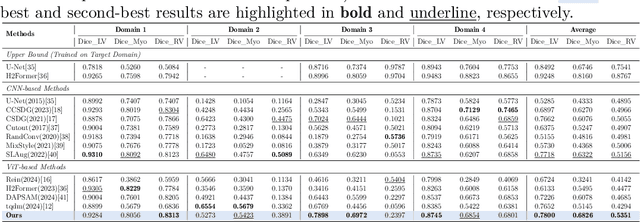
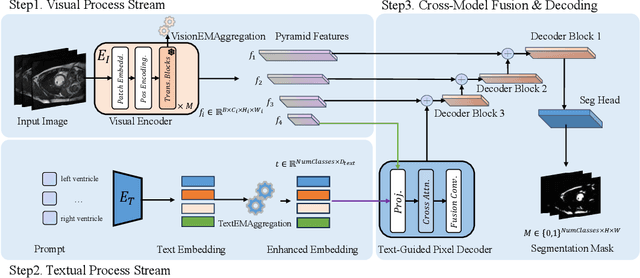
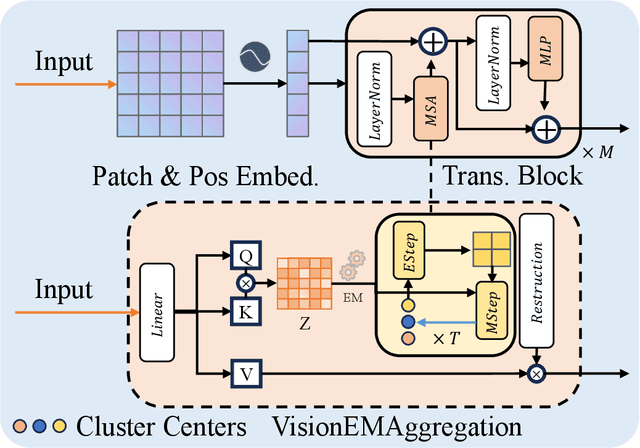
Abstract:Multimodal models have achieved remarkable success in natural image segmentation, yet they often underperform when applied to the medical domain. Through extensive study, we attribute this performance gap to the challenges of multimodal fusion, primarily the significant semantic gap between abstract textual prompts and fine-grained medical visual features, as well as the resulting feature dispersion. To address these issues, we revisit the problem from the perspective of semantic aggregation. Specifically, we propose an Expectation-Maximization (EM) Aggregation mechanism and a Text-Guided Pixel Decoder. The former mitigates feature dispersion by dynamically clustering features into compact semantic centers to enhance cross-modal correspondence. The latter is designed to bridge the semantic gap by leveraging domain-invariant textual knowledge to effectively guide deep visual representations. The synergy between these two mechanisms significantly improves the model's generalization ability. Extensive experiments on public cardiac and fundus datasets demonstrate that our method consistently outperforms existing SOTA approaches across multiple domain generalization benchmarks.
DConAD: A Differencing-based Contrastive Representation Learning Framework for Time Series Anomaly Detection
Apr 19, 2025Abstract:Time series anomaly detection holds notable importance for risk identification and fault detection across diverse application domains. Unsupervised learning methods have become popular because they have no requirement for labels. However, due to the challenges posed by the multiplicity of abnormal patterns, the sparsity of anomalies, and the growth of data scale and complexity, these methods often fail to capture robust and representative dependencies within the time series for identifying anomalies. To enhance the ability of models to capture normal patterns of time series and avoid the retrogression of modeling ability triggered by the dependencies on high-quality prior knowledge, we propose a differencing-based contrastive representation learning framework for time series anomaly detection (DConAD). Specifically, DConAD generates differential data to provide additional information about time series and utilizes transformer-based architecture to capture spatiotemporal dependencies, which enhances the robustness of unbiased representation learning ability. Furthermore, DConAD implements a novel KL divergence-based contrastive learning paradigm that only uses positive samples to avoid deviation from reconstruction and deploys the stop-gradient strategy to compel convergence. Extensive experiments on five public datasets show the superiority and effectiveness of DConAD compared with nine baselines. The code is available at https://github.com/shaieesss/DConAD.
C2S-AE: CSI to Sensing enabled by an Auto-Encoder-based Framework
Mar 02, 2025



Abstract:Next-generation mobile networks are set to utilize integrated sensing and communication (ISAC) as a critical technology, providing significant support for sectors like the industrial Internet of Things (IIoT), extended reality (XR), and smart home applications. A key challenge in ISAC implementation is the extraction of sensing parameters from radio signals, a task that conventional methods struggle to achieve due to the complexity of acquiring sensing channel data. In this paper, we introduce a novel auto-encoder (AE)-based framework to acquire sensing information using channel state information (CSI). Specifically, our framework, termed C2S (CSI to sensing)-AE, learns the relationship between CSI and the delay power spectrum (DPS), from which the range information can be readily accessed. To validate our framework's performance, we conducted measurements of DPS and CSI in real-world scenarios and introduced the dataset 'SHU7'. Our extensive experiments demonstrate that the framework excels in C2S extrapolation, surpassing existing methods in terms of accuracy for both delay and signal strength of individual paths. This innovative approach holds the potential to greatly enhance sensing capabilities in future mobile networks, paving the way for more robust and versatile ISAC applications.
MTCA: Multi-Task Channel Analysis for Wireless Communication
Feb 26, 2025



Abstract:In modern wireless communication systems, the effective processing of Channel State Information (CSI) is crucial for enhancing communication quality and reliability. However, current methods often handle different tasks in isolation, thereby neglecting the synergies among various tasks and leading to extract CSI features inadequately for subsequent analysis. To address these limitations, this paper introduces a novel Multi-Task Channel Analysis framework named MTCA, aimed at improving the performance of wireless communication even sensing. MTCA is designed to handle four critical tasks, including channel prediction, antenna-domain channel extrapolation, channel identification, and scenario classification. Experiments conducted on a multi-scenario, multi-antenna dataset tailored for UAV-based communications demonstrate that the proposed MTCA exhibits superior comprehension of CSI, achieving enhanced performance across all evaluated tasks. Notably, MTCA reached 100% prediction accuracy in channel identification and scenario classification. Compared to the previous state-of-the-art methods, MTCA improved channel prediction performance by 20.1% and antenna-domain extrapolation performance by 54.5%.
A MIMO Wireless Channel Foundation Model via CIR-CSI Consistency
Feb 17, 2025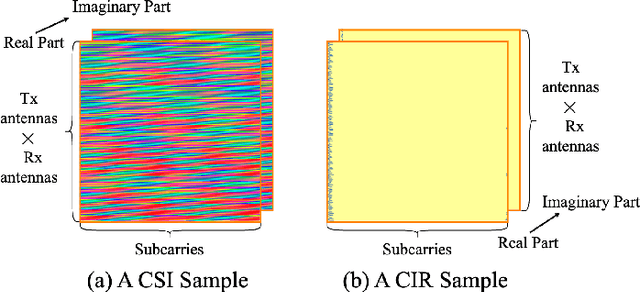
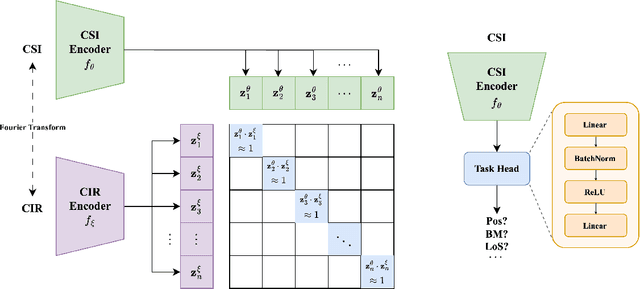
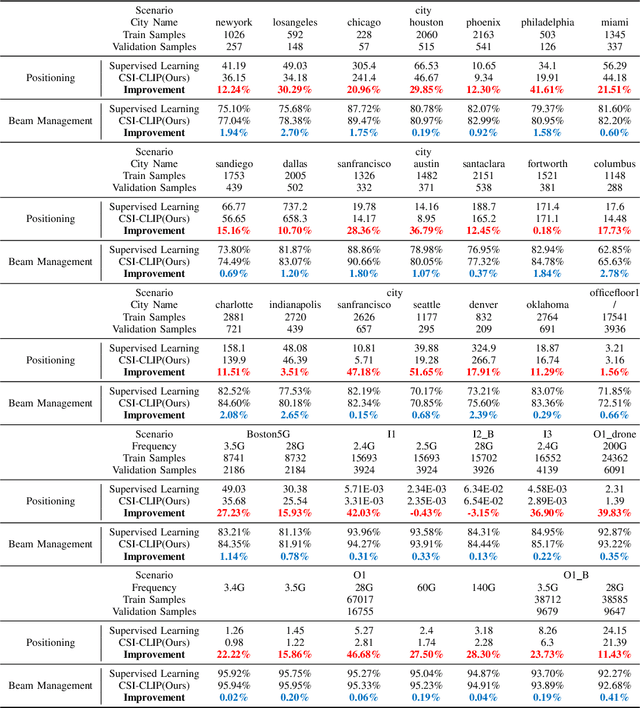

Abstract:In the field of artificial intelligence, self-supervised learning has demonstrated superior generalization capabilities by leveraging large-scale unlabeled datasets for pretraining, which is especially critical for wireless communication models to adapt to a variety of scenarios. This paper innovatively treats Channel State Information (CSI) and Channel Impulse Response (CIR) as naturally aligned multi-modal data and proposes the first MIMO wireless channel foundation model, named CSI-CLIP. By effectively capturing the joint representations of both CIR and CSI, CSI-CLIP exhibits remarkable adaptability across scenarios and robust feature extraction capabilities. Experimental results show that in positioning task, CSI-CLIP reduces the mean error distance by 22%; in beam management task, it increases accuracy by 1% compared to traditional supervised methods, as well as in the channel identification task. These improvements not only highlight the potential and value of CSI-CLIP in integrating sensing and communication but also demonstrate its significant advantages over existing techniques. Moreover, viewing CSI and CIR as multi-modal pairs and contrastive learning for wireless channel foundation model open up new research directions in the domain of MIMO wireless communications.
Fast-Fading Channel and Power Optimization of the Magnetic Inductive Cellular Network
Jun 07, 2024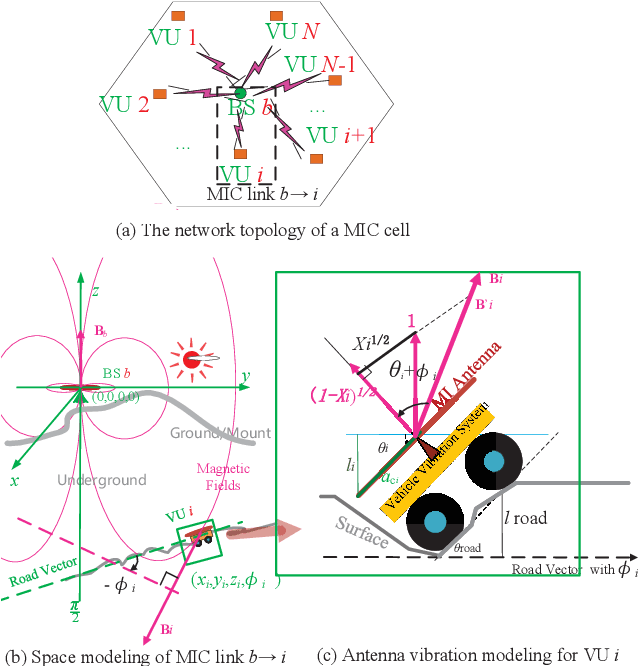
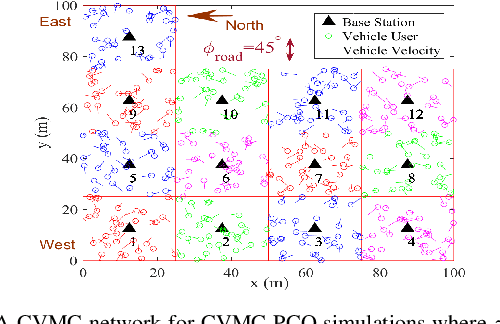
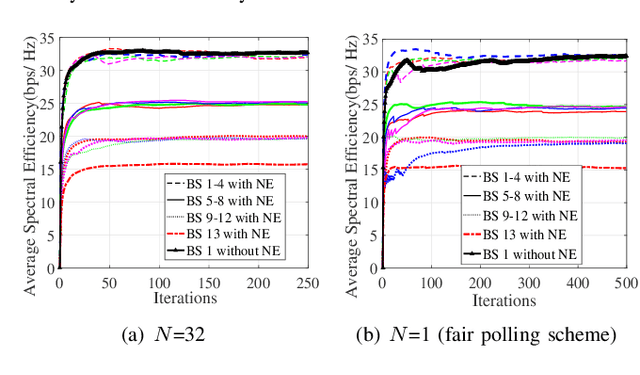
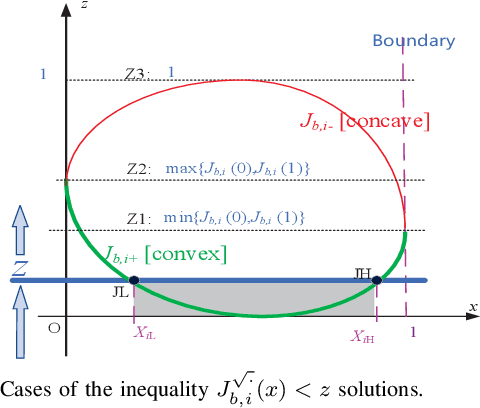
Abstract:The cellular network of magnetic Induction (MI) communication holds promise in long-distance underground environments. In the traditional MI communication, there is no fast-fading channel since the MI channel is treated as a quasi-static channel. However, for the vehicle (mobile) MI (VMI) communication, the unpredictable antenna vibration brings the remarkable fast-fading. As such fast-fading cannot be modeled by the central limit theorem, it differs radically from other wireless fast-fading channels. Unfortunately, few studies focus on this phenomenon. In this paper, using a novel space modeling based on the electromagnetic field theorem, we propose a 3-dimension model of the VMI antenna vibration. By proposing ``conjugate pseudo-piecewise functions'' and boundary $p(x)$ distribution, we derive the cumulative distribution function (CDF), probability density function (PDF) and the expectation of the VMI fast-fading channel. We also theoretically analyze the effects of the VMI fast-fading on the network throughput, including the VMI outage probability which can be ignored in the traditional MI channel study. We draw several intriguing conclusions different from those in wireless fast-fading studies. For instance, the fast-fading brings more uniformly distributed channel coefficients. Finally, we propose the power control algorithm using the non-cooperative game and multiagent Q-learning methods to optimize the throughput of the cellular VMI network. Simulations validate the derivation and the proposed algorithm.
Non-destructive Degradation Pattern Decoupling for Ultra-early Battery Prototype Verification Using Physics-informed Machine Learning
Jun 01, 2024



Abstract:Manufacturing complexities and uncertainties have impeded the transition from material prototypes to commercial batteries, making prototype verification critical to quality assessment. A fundamental challenge involves deciphering intertwined chemical processes to characterize degradation patterns and their quantitative relationship with battery performance. Here we show that a physics-informed machine learning approach can quantify and visualize temporally resolved losses concerning thermodynamics and kinetics only using electric signals. Our method enables non-destructive degradation pattern characterization, expediting temperature-adaptable predictions of entire lifetime trajectories, rather than end-of-life points. The verification speed is 25 times faster yet maintaining 95.1% accuracy across temperatures. Such advances facilitate more sustainable management of defective prototypes before massive production, establishing a 19.76 billion USD scrap material recycling market by 2060 in China. By incorporating stepwise charge acceptance as a measure of the initial manufacturing variability of normally identical batteries, we can immediately identify long-term degradation variations. We attribute the predictive power to interpreting machine learning insights using material-agnostic featurization taxonomy for degradation pattern decoupling. Our findings offer new possibilities for dynamic system analysis, such as battery prototype degradation, demonstrating that complex pattern evolutions can be accurately predicted in a non-destructive and data-driven fashion by integrating physics-informed machine learning.
 Add to Chrome
Add to Chrome Add to Firefox
Add to Firefox Add to Edge
Add to Edge